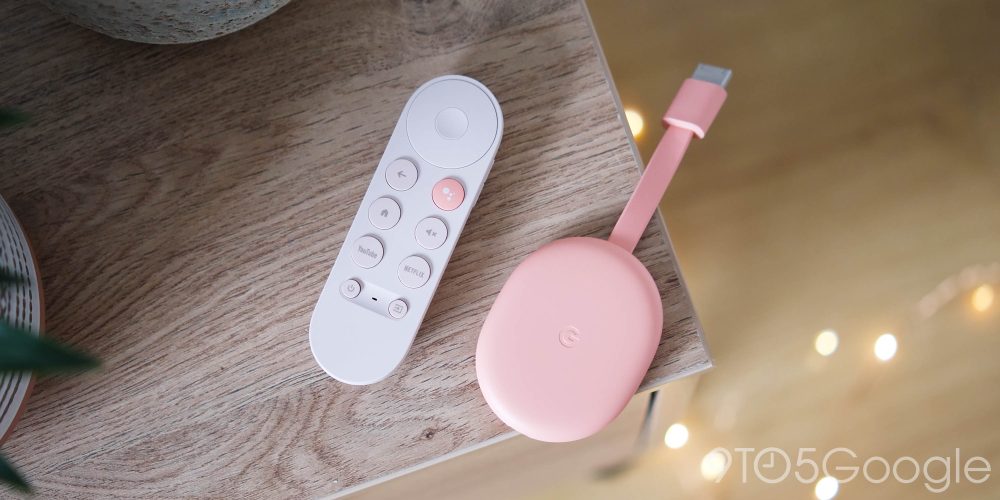
Google’s newest TV companion is the Chromecast HD. Both it and the Chromecast of 2020 look identical and share a lot of the same features, so what are the main differences? Let’s find out.
First off, it’s worth noting that there are different versions of Chromecast beyond the HD and 4K versions with Google TV. Prior to those devices, there was the Legacy Chromecast line, which didn’t make use of a remote. Rather, you had to cast anything you wanted to be displayed through it, which could prove to be a hassle, and thus it was never looked at as a stand-alone device for your TV.
Cut to 2020, Google released the Chromecast with Google TV. Google TV is a version of Android TV made specifically for Chromecast, and it works phenomenally well. Because of the OS it runs, the new Chromecast is much more of a stand-alone device that could replace your SHIELD or even Apple TV.
What’s the difference?
On the surface, you’re looking at two very similar devices. The body of the Chromecast HD itself has the same minimal oval design that’s easy to tuck away behind a TV. Both have the same short HDMI cable that lets the Chromecast hang off the back and a USB-C port for power. The remotes are even identical, with the same button layout and design that’s perfect for using – and losing.
The real differences come with the internal structure. As the names – Chromecast HD vs. 4K – imply, the Chromecast with Google TV HD supports basic HD video.
Now, back in 2016, that may have been impressive, but in 2022, it means something a little less than flashy. The Chromecast HD only outputs 1920×1080 video, which won’t look as healthy on 4K TVs. The device still handles HDR content, giving it a little extra life. Even with that, the difference in resolution is noticeable in some instances.

As for the Chromecast with Google TV (2020), that older device streams in 4K for most applications. Video streaming apps like Hulu still don’t process in 4K, which is more Hulu’s responsibility than the Chromecast itself.
Related: Chromecast with Google TV, almost two years later – Poorly aging hardware betrays the good OS
Internally, you have a different chip powering the device. That chip is the Amlogic S805X2, which supports AV1 decoding – the Chromecast (2020) does not support AV1 – even though the hardware limits resolution. As far as storage, you’re looking at the same 8GB with a decrease to 1.5GB RAM.
In truth, HD for the device is completely fine and, in certain use cases, is a much better option over the Chromecast with 4K. For those that have sub-4K and older TVs, the Chromecast is a fantastic option for making it a smart TV and equipping it with the power to stream loads of content. Buying a 4K device and equipping an HD TV with it just doesn’t make sense, especially when there’s a cost difference.
The Chromecast with Google TV 4K is currently available for purchase alongside the Chromecast HD. While not expensive to begin with, there’s a pretty significant price difference between the two devices.
The older model that handles higher resolution video is priced at $49.99. When looking for an addition to your 4K TV, $50 is nothing to scoff at. As for the Chromecast HD, the price there is a little easier to swallow at $29.99. Again, this is a great middle-ground price for those that just need to spruce up older TVs and don’t need to kit them out completely.
One big downside to the Chromecast with Google TV in 2020 was the method of charging. Rather than the ability to charge via the common USB-A port on most modern TVs, the Chromecast needed its own brick and a dedicated outlet to sufficiently be powered.
We were hoping that a Chromecast with fewer demands would be able to draw enough juice from the USB port behind TVs, but that’s not the case. Just like the 4K 2020 model, the Chromecast HD also needs its own brick and outlet to stay on.

Besides that, another downside is the lack of colors offered for the Chromecast HD. If you recall, the Chromecast with Google TV 4K has several different colorways to choose from, each with a matching remote. Those colors were a nice light blue called “Sky” and a pastel coral called “Sunrise.” Of course, there is also a white version for boring individuals like myself. Unfortunately, that white version is the only option offered for the Chromecast HD.
Considering both Chromecasts are externally identical, we could see new colors down the road for the HD version. As of right now, though, we’ll have to deal with white.
In all, both devices are great. The original Chromecast with Google TV 4K is a fantastic little streamer that makes a great addition to most TVs. The little HD brother, on the other hand, is a wonderful tool for TVs that don’t need 4K content, as well as older devices that can’t quite handle it anyway.
Both are meant for specific applications, and because Google didn’t stray too far with the newer HD model, you’re looking at a competent option for general streaming needs.
Buy the Chromecast
More on Chromecast with Google TV:
- Chromecast with Google TV HD bootloader can be unlocked by default
- Chromecast with Google TV (4K) is getting updated to Android 12 soon
- Google TV and Android TV reportedly pushing for at least 16GB of storage on new devices
Author: Andrew Romero
Source: 9TO5Google



